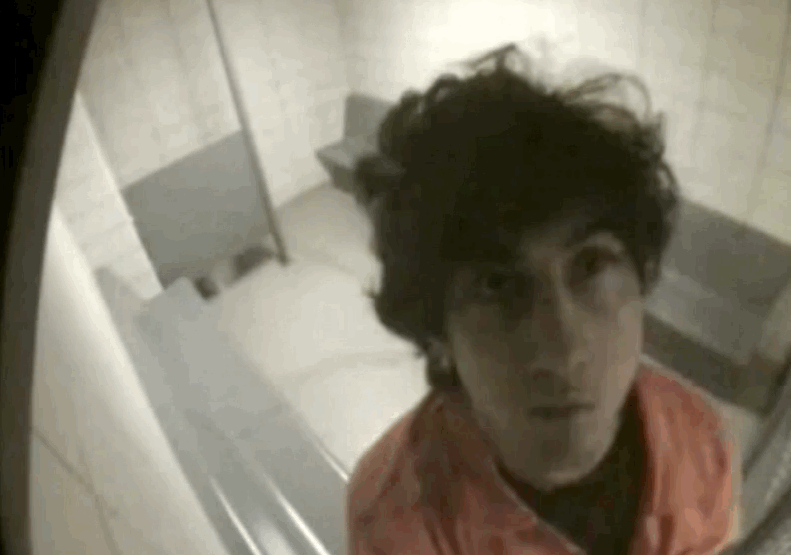Tsarnaev Defense Attempts to Discredit Middle Finger Photo

Courtesy U.S. Attorney’s Office
The prosecution made a splash in the first day of the sentencing phase of convicted Boston Marathon bomber Dzhokhar Tsarnaev by capping their opening arguments with a still of the then 19-year-old giving the middle finger to the video camera placed inside his cell.
“He is unrepentant, uncaring, and untouched by the harm and sorrow that he created,” prosecutor Nadine Pellegrini said Tuesday.
Tsarnaev’s defense team went to work chipping away at the still’s shock value on day two, casting doubt on whether the still was indeed evidence of Tsarnaev’s impudence, or an innocuous gesture taken out of context.
Gary Olivera, a deputy U.S. Marshal of 14 years, was called to the stand to testify. Olivera said he watched Tsarnaev flip off the camera in real-time on a remote monitor on July 10, 2013. Defense lawyer Miriam Conrad took issue with Olivera’s report of the incident, which was filed two days later. But when Conrad asked Olivera if he would have filed a report if anyone else had given the middle finger, the prosecution objected, and that line of questioning ended there.
“A lot of times people do that to get our attention,” Olivera said of the gesture.
Conrad presented the two-minute snippet of security footage from which the prosecution took the still. She noted that Tsarnaev fixes his shaggy crop of hair while staring into the camera. Next, she had Olivera admit that the camera’s protective casing has a shiny, reflective surface, suggesting that Tsarnaev could’ve been using it like a mirror.
Prior to the prosecution’s still, Tsarnaev has two fingers up, forming what Conrad called a “V sign,” before displaying only his middle finger. This begs the question: what on earth is a V sign?
Judge George A. O’Toole Jr. repeatedly asked Conrad to refrain from characterizing the footage, and instead allow the jury to make up its own mind.

